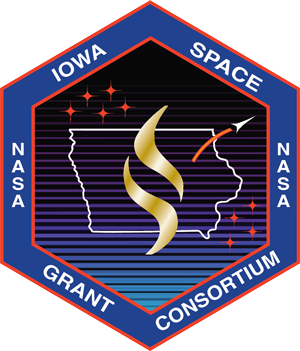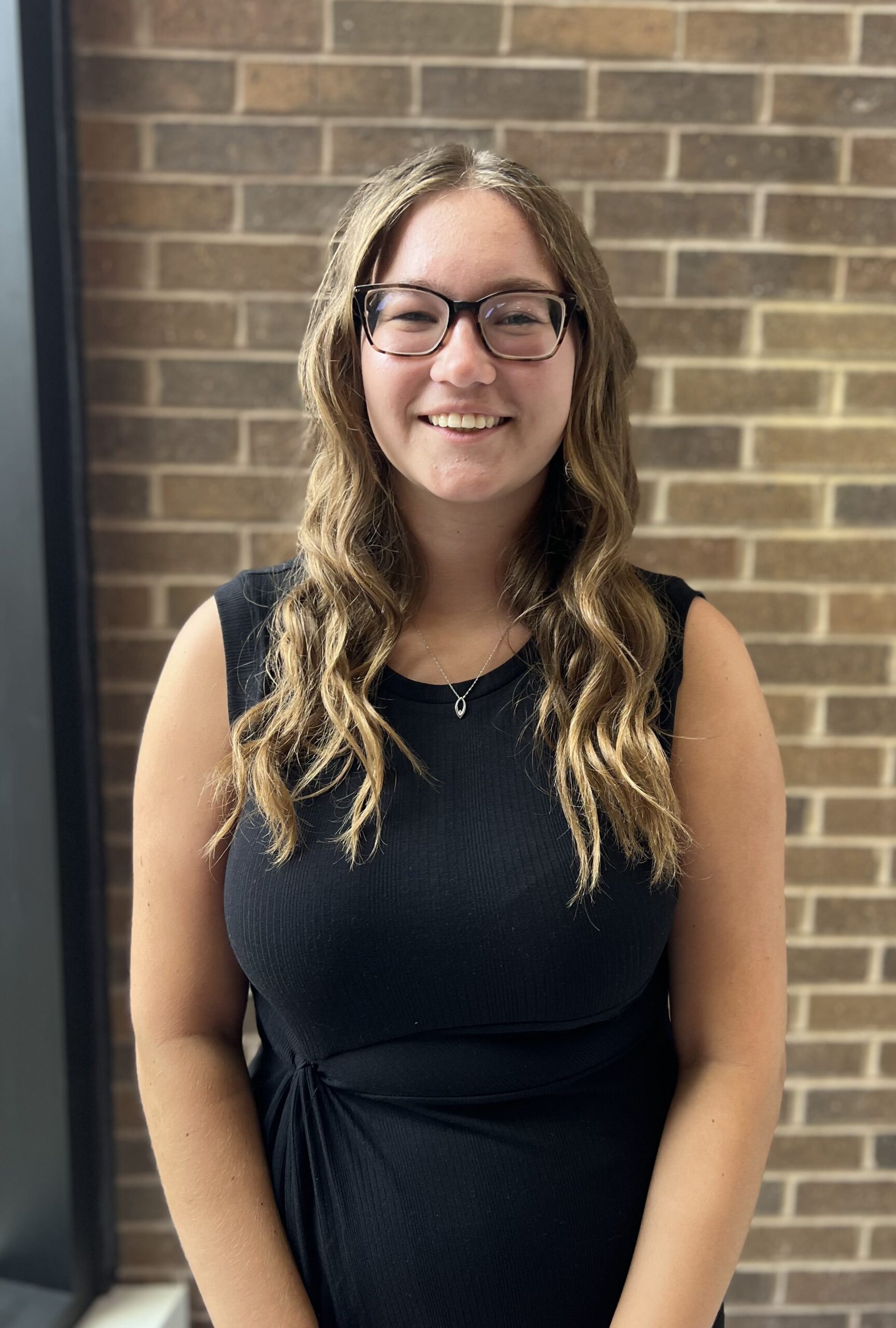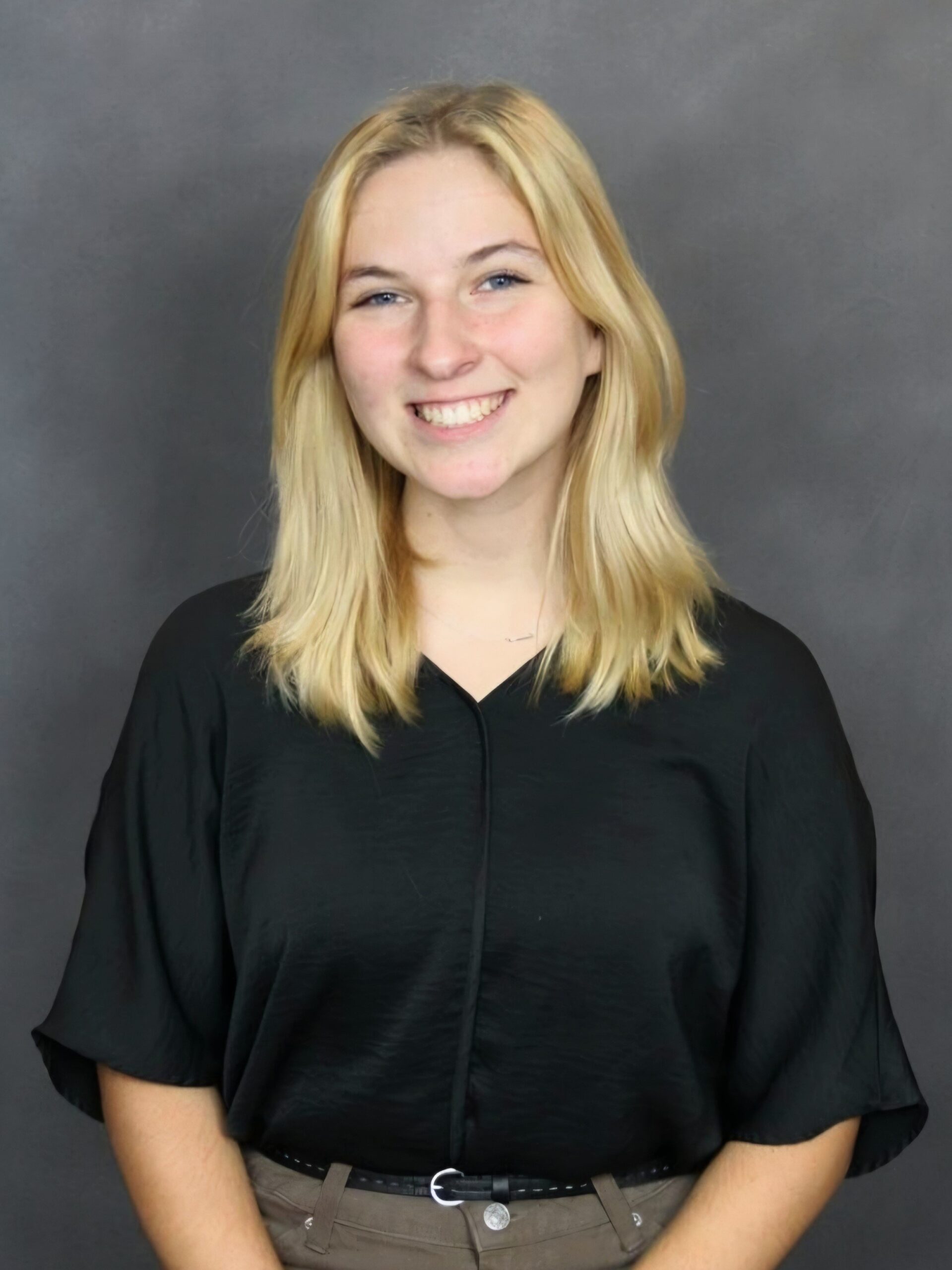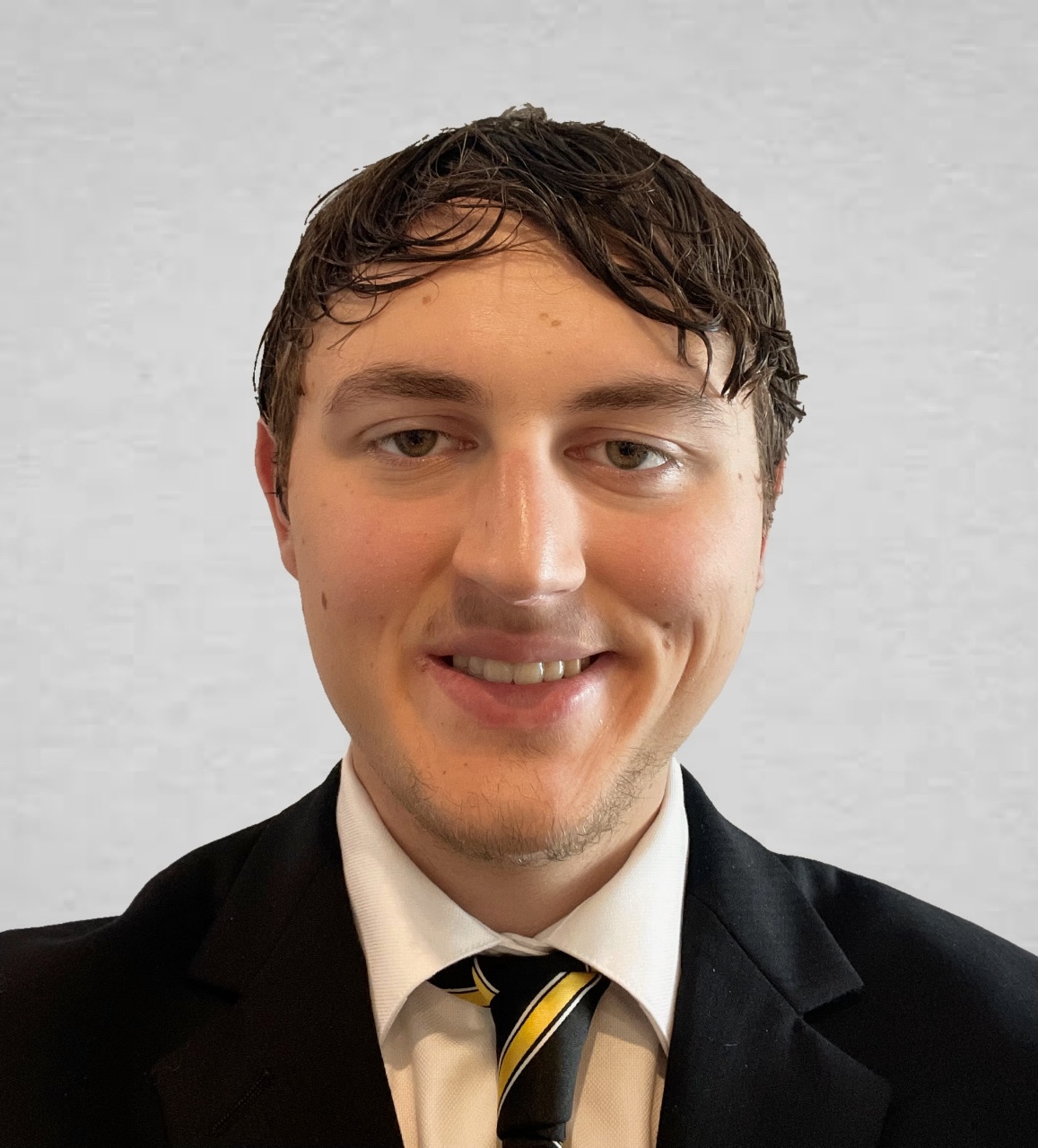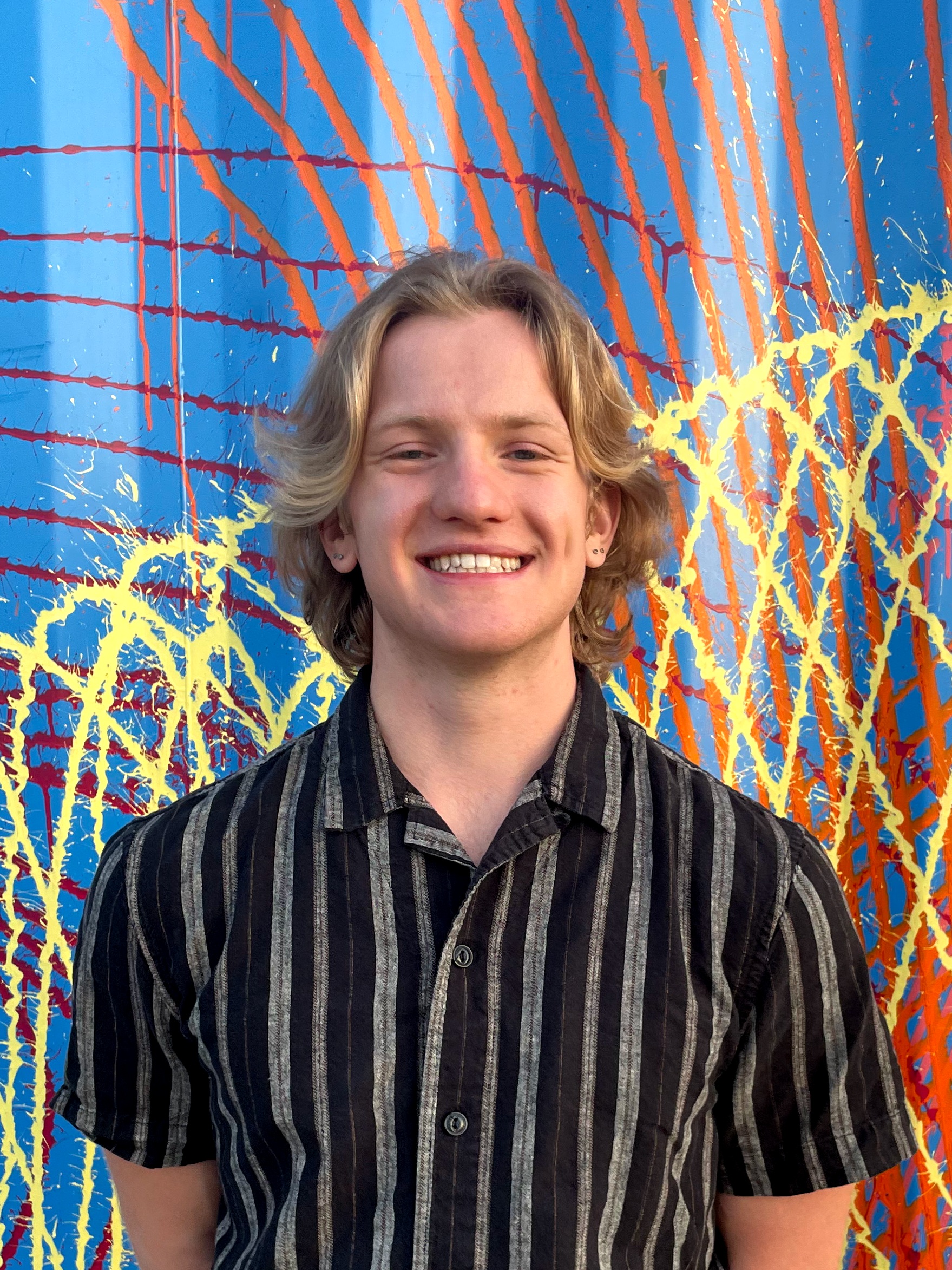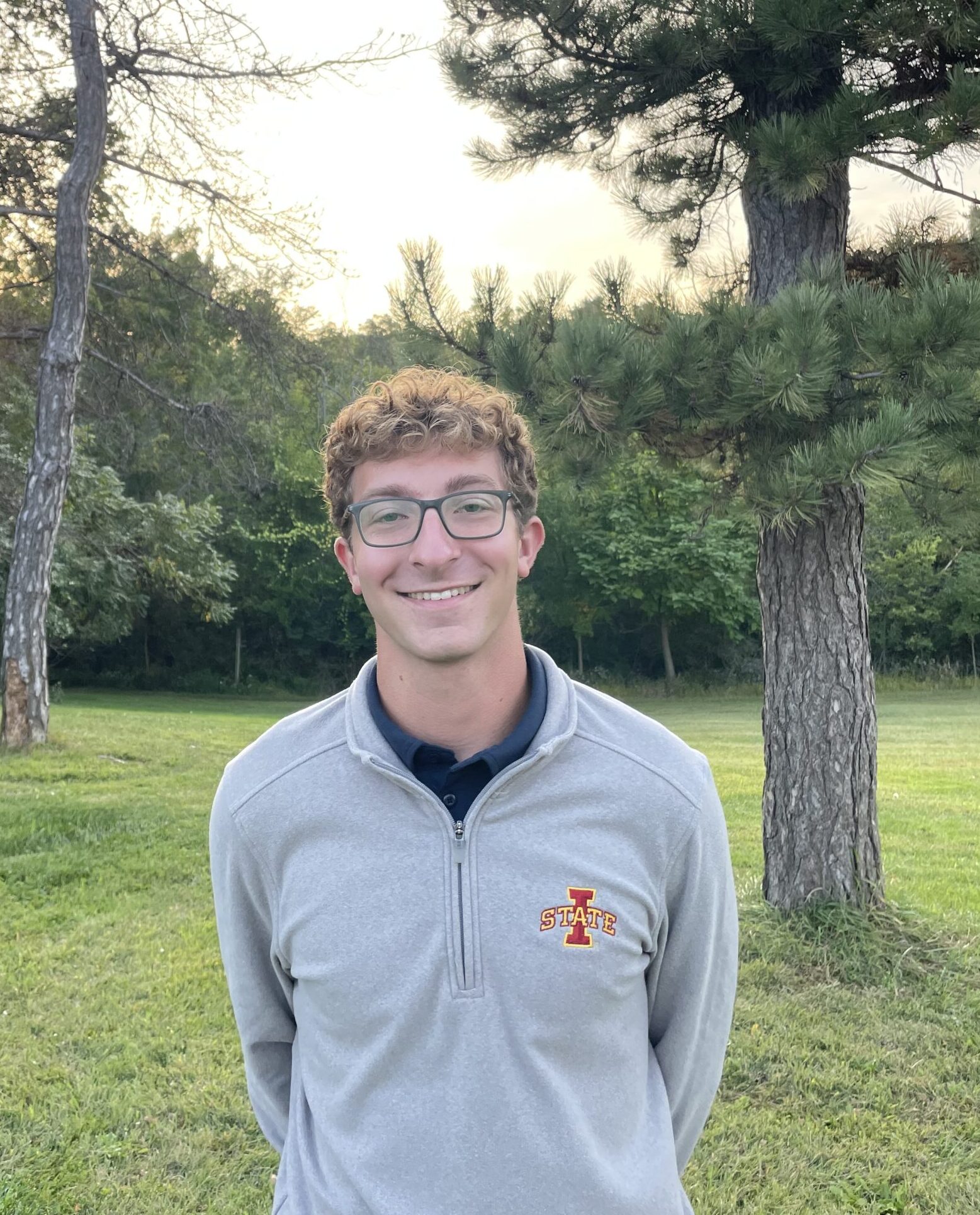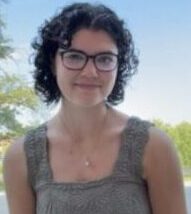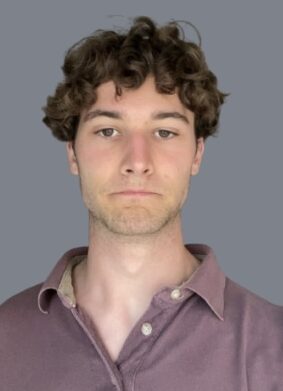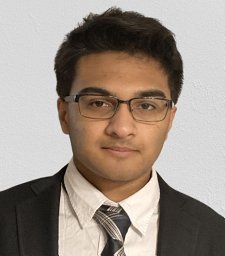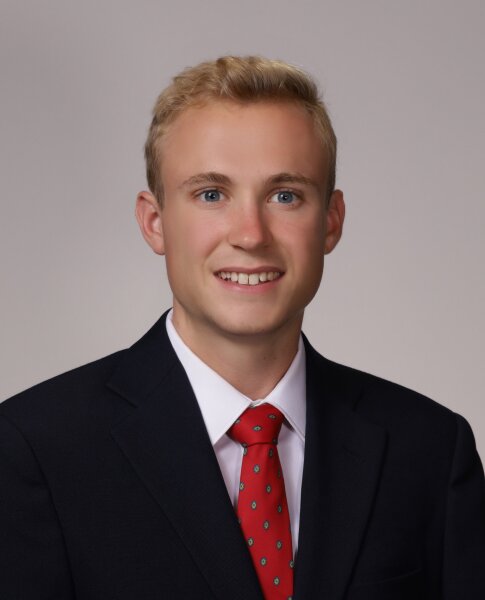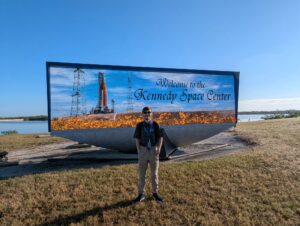Halle Hoefing – University of Northern Iowa
My academic research project focuses on expanding the understanding of Bombus griseocollis population genetics using RADSeq and WGS, while extracting DNA with minimum tissue through a non-lethal collection method. Over the past year, I have extracted flight muscle from the thoraxes of bees and utilized PCR, gel electrophoresis, and Ugene software to analyze concentration and similarity.
This past summer, I adapted methods used in the study (Mola et al., 2021) that used tarsal clippings of bees for DNA instead of killing and freezing the entire bee. This resulted in a smaller yield of DNA to work with, but still produced a viable amount. This will allow me to potentially continue this project with an endangered species or population without it being lethal. I tested this method on bees currently in the lab to find the amount of tissue needed for quantifiable results, and then I plan to proceed to a new population. In addition, B. griseocollis has not had a published whole genome, and my project may eventually lead to the publication of this species’ whole genome sequence which can provide reference for other researchers.
Emily Formella – University of Iowa
Spaceflight-associated neuro-ocular syndrome (SANS) is a major health concern for individuals who spend extended periods of time in low Earth orbit, particularly long-duration astronauts. This condition is characterized by increased intracranial pressure, retina structural changes, and visual impairment. Exposure to microgravity has been identified as a primary risk factor, yet the underlying cellular mechanisms are not fully understood. Microgravity is known to disrupt the biomechanical signaling in many human cell types, and comparable disruptions are associated with pathological changes in retinal pigmented epithelial (RPE) and potentially choroidal vascular endothelial (ChEC) cells in other ocular diseases.
We aim to characterize the impact of simulated microgravity on the gene expression of RPE and ChEC cells and investigate the role of mechanotransduction signaling in this response. Using cells cultured on microcarrier beads suspended within a rotating bioreactor, we simulate microgravity by balancing sedimentation and centrifugal forces. We will evaluate cells for changes in gene expression, viability, and function compared to Earth gravity. We can also assess the effects of introducing small-molecule inhibitors known to disrupt mechanotransduction, such as Rho Kinase Inhibitors, which have demonstrated therapeutic uses in ophthalmology.
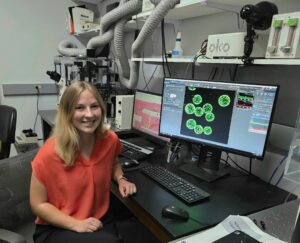 This project aligns with the NASA Mission Directorates by addressing a physiological risk that affects human safety and performance during spaceflight. Space exploration is an important endeavor, but it can only be sustained if we uphold the health and safety of astronauts. By advancing our understanding of cellular responses to microgravity, this research will provide insight into countermeasures that support astronaut health and performance.
This project aligns with the NASA Mission Directorates by addressing a physiological risk that affects human safety and performance during spaceflight. Space exploration is an important endeavor, but it can only be sustained if we uphold the health and safety of astronauts. By advancing our understanding of cellular responses to microgravity, this research will provide insight into countermeasures that support astronaut health and performance.
Brendyn Little – University of Iowa
Galactic archaeology — the study of the structure and formation of the Milky Way — provides a snapshot of the kinematics, composition, and evolution of our galaxy, helping us understand the processes that take place in Milky Way-like galaxies at different stages. A key issue with this is our limited perspective of the Milky Way, making it extremely hard to study some regions such as the Galactic Bulge, Galactic Center, and spiral arms behind them.
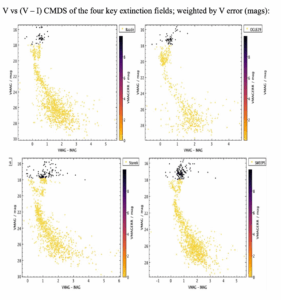 In this project, I revisit “low extinction windows” in the Galactic Bulge previously studied by Thomas Brown (2009) via the WFC3 Galactic Bulge Treasury Program. I will compare the results of the program’s Hubble Space Telescope’s WFC3 data to newer data by cross matching it to databases such as Gaia’s EDR3. Additionally, we will use new stellar models such as Tim Morton’s isochrones (2015) and explore more recent studies of the Bulge if time permits. From this, I will create improved extinction maps to characterize the stellar populations of the Bulge. All of this will provide a deeper insight into the kinematics, composition, and evolution of both the Galactic Bulge and the Milky Way.
In this project, I revisit “low extinction windows” in the Galactic Bulge previously studied by Thomas Brown (2009) via the WFC3 Galactic Bulge Treasury Program. I will compare the results of the program’s Hubble Space Telescope’s WFC3 data to newer data by cross matching it to databases such as Gaia’s EDR3. Additionally, we will use new stellar models such as Tim Morton’s isochrones (2015) and explore more recent studies of the Bulge if time permits. From this, I will create improved extinction maps to characterize the stellar populations of the Bulge. All of this will provide a deeper insight into the kinematics, composition, and evolution of both the Galactic Bulge and the Milky Way.
Braden Carne – University of Iowa
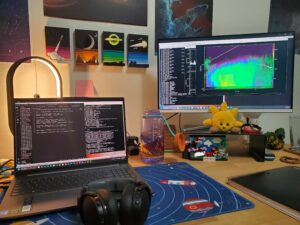 Eugene Parker first coined the existence of a “solar wind” in 1958, theorizing that the Sun’s corona emits a constant stream of charged particles as a plasma. Since then, heliophysicists have been working to describe the mechanisms, phenomena, and structures that occur due to the solar wind.
Eugene Parker first coined the existence of a “solar wind” in 1958, theorizing that the Sun’s corona emits a constant stream of charged particles as a plasma. Since then, heliophysicists have been working to describe the mechanisms, phenomena, and structures that occur due to the solar wind.
One of these structures is the critical point at which the corona transitions to becoming the solar wind, called the Alfvén surface (or Alfvén critical point), named after Hannes Alfvén. Parker Solar Probe (PSP), launched in 2018, was the first spacecraft to penetrate the Alfvén surface and obtain readings across the Alfvén surface and inside the corona, giving physicists a wealth of data to explore.
My research focuses on electron behavior across the critical point and if/how they deviate from expected behavior. I do this using results from PSP using the SWEAP (Solar Wind Electrons, Protons, and Alphas) instrument suite and performing statistical and numerical analyses and calculations.
Jack Brooks – Iowa State University
In gamma-ray astronomy, the ability to combine data from multiple observatories that sample different regions of the gamma-ray spectrum is crucial to understanding processes–such as particle acceleration and diffusion–that take place in and around astrophysical phenomena. Ground-based gamma-ray observatories therefore provide an important complement to NASA’s Fermi Gamma-Ray Space Telescope (FGST).
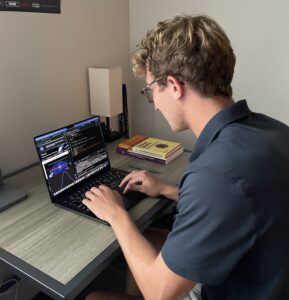
In particle astrophysics, extended maximum likelihood methods, which can be used to derive the fractional contributions as well as spatial and spectral parameters of multiple data components with different astrophysical origins, also provide a natural framework for combining data from multiple observatories. Such techniques are already the standard approach for analyzing data from the FGST. Our research seeks to address the problems that arise when applying the technique of binned extended maximum likelihoods to data procured for ground-based gamma-ray astronomy. These problems stem from the fact that gamma-ray astronomy data spaces are largely dominated not by gamma-rays, but by cosmic rays. The large uncertainties associated with Monte Carlo models of cosmic ray background in conjunction with the low uncertainties of gamma-ray models result in a data space comprising regions of high uncertainty and other regions of low uncertainty. A data space of this form introduces serious mathematical issues for present maximum likelihood methods. Our objective is to run a series of tests that emulate this problematic scenario in order to better understand the statistical considerations that must be made for maximum likelihood analysis of gamma-ray data.
Mallory Weber – University of Iowa
X-ray science can shed light on key physics, probing how black holes behave, how they influence galactic evolution, and how massive stars shape their environments through powerful winds. Observations at these wavelengths require sending technology above the Earth’s atmosphere, where the desired signals are not absorbed. This makes CubeSats and SmallSats important tools for conducting X-ray science, providing low cost access to space for focused experiments. However, these missions require efficient, moderately sized X-ray detectors at low costs in order to perform their target science. My group is examining the performance of commercial CMOS sensors for use in soft X-ray observations and their potential as low-cost alternatives to CCD sensors.
We have shown that the CMOS performance is on par with CCDs currently in use in several major spacecraft, and their readout rates and operable temperatures are more favorable. My research focuses on measuring the quantum efficiency (QE) of the CMOS sensor, which will inform us upon the sensitivity of the instrument. I will develop a test bed in a specialized vacuum chamber equipped with an X-ray source that will allow us to make preliminary measurements at different X-ray wavelengths to determine the QE. Additionally, we plan to eventually further these measurements during a test campaign at the Advanced Light Source, an X-ray synchrotron facility.
James Neal – Drake University
While space flight is a crucial and exciting part of NASA’s mission, it can inflict a significant blow to one’s physiology. The intense vibration of an aircraft rattles the brain, resulting in changes on the cellular, molecular, and even cognitive level. Studies have demonstrated that helicopter pilots enduring chronic, low-level vibrations are more vulnerable to central nervous system (CNS) degeneration. Furthermore, mild traumatic brain injuries (mTBIs) can mimic neurodegenerative conditions such as Alzheimer’s and Parkinson’s Disease in their molecular and cognitive manifestation. Therefore, it is critical to the safety of astronauts to better understand the CNS effects of the vibrations endured during space flight.
Our lab employs a mouse model of mTBI on cognition and neurodegeneration. We test mice that have had mTBIs in different cognitive and behavioral dimensions, including an operant conditioning paradigm that assays working memory, attention, and decision-making. We then examine biomarkers of neurodegeneration in the prefrontal cortex, striatum, and hippocampus. A previous study conducted in our lab has highlighted a potential neuroprotective role of female sex hormones following mTBIs. We hope to expand this research to specifically investigate the repetitive vibrational injuries endured during spaceflight to inform safety procedures and possible neuroprotective interventions and treatments for traumatic brain injuries.
Adam Haroon – Iowa State University
As Urban Air Mobility (UAM) emerges as a transformative transportation solution, ensuring broad accessibility is essential for successful integration into metropolitan environments. Current UAM development may insufficiently account for varying local transportation needs, potentially limiting the reach and effectiveness of these systems if not carefully designed. This project addresses the critical gap between advanced autonomous air transp ortation technologies and urban planning practices by developing machine learning frameworks that prioritize both operational safety and accessibility in UAM system design.
ortation technologies and urban planning practices by developing machine learning frameworks that prioritize both operational safety and accessibility in UAM system design.
Our research employs a multi-faceted approach, combining deep reinforcement learning policies with hybrid LSTM-Graph Neural Network architectures to enable safe, efficient multi-agent UAV collision avoidance in complex urban airspaces. Using real-world data from Austin, Texas, we are building robust simulation environments that reflect practical UAM operations while creating adaptive algorithms for airspace management. The project includes optimization of vertiport placement through Monte Carlo tree search methods and the creation of VertiCAP, an innovative planning tool designed to incorporate stakeholder perspectives into UAM infrastructure design decisions.
The research will produce scalable algorithms capable of managing high-density UAM traffic while supporting fair access to aerial transportation options in a range of urban settings. By integrating design principles that reflect input from local stakeholders, UAM services are effectively aligned with municipal needs. The VertiCAP tool will offer municipalities data-informed insights for balanced vertiport placement and operational planning.
This project directly supports NASA ARMD’s Strategic Thrusts by advancing autonomous collision avoidance systems (Thrust 6), enabling safe vertical lift vehicle integration (Thrust 4), developing scalable airspace management for global operations (Thrust 1), and creating real-time safety assurance capabilities (Thrust 5). The outcomes will provide NASA with foundational technologies for next-generation aviation infrastructure while introducing planning strategies that support sustainable deployment in varied urban environments.
